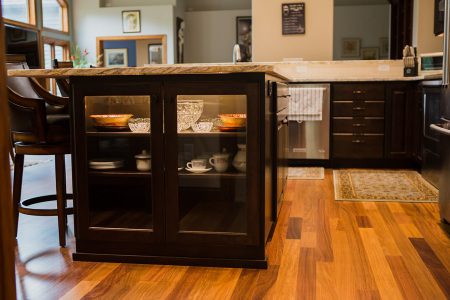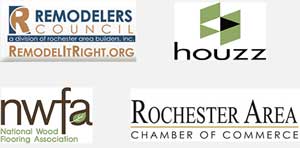 Hardwood floors are so popular among homeowners. When they walk on hardwood, they feel its timeless solidity and the warm, rich look of the wood. Hardwood is a fascinating substance, both for the story it tells as well as its diversity.
Hardwood floors are so popular among homeowners. When they walk on hardwood, they feel its timeless solidity and the warm, rich look of the wood. Hardwood is a fascinating substance, both for the story it tells as well as its diversity.
Any room can benefit from hardwood floors owing to their elegant look and warmth. This wood has natural characteristics that give it a visual appeal that no other type of floor can match.
It has also evolved over the years. The types of hardwood that customers can choose from today are more varied than ever before, as are their applications. With the growth of consumer demand for hardwood floors, manufacturers have been able to create superior finishes and construct and install floors of superior quality.
In recent years, cultural researchers have observed that younger generations prioritize “authenticity” among products and experiences. This preference for surrounding oneself with real things, people, and lifestyles has been around for centuries. It is easy to understand the value of a room with a gorgeous hardwood floor as its foundation.
Types of Hardwood Flooring
Hardwood styles depend on the wood species available. The most common species are red oak, white oak, maple, cherry, white ash, hickory, and pecan. There is a unique graining pattern and texture to each tree. Boards’ grain reveal is determined by the way they are cut. Essentially, there are two ways to cut boards. “Sliced cut” provides a more uniform grain pattern, whereas “rotary cut” produces a more pronounced pattern.
There are two types of hardwood floors: prefinished and unfinished. Prefinished hardwood can be installed right away in your home. A manufacturing plant has already sanded, stained, and finished the hardwood boards. The resulting surface is harder, more durable.
It saves hours of labor and cleanup to install prefinished floors. Unfinished wood floors, however, allow you to customize their look. A wood species is selected, sanded, and then stained on-site. It is also possible to level the floor surface after it has been installed with unfinished wood.
Popular Flooring Trends
Distressed hardwood seems to be most popular now. Hand-scraped with rough character, knotholes, and wood grain with indentions are often being chosen.
Luxury vinyl planks are more water-resistant than this hardwood flooring. You can mop instead of soaking it in water. Nonetheless, scratches can easily be repaired, especially with distressed wood. It only takes a marking pen to repair a scratch. It gives the floor the same look!
What’s Next?
The only drawback to traditional hardwood flooring is that it is subject to water damage. Planks that are solid and tongue-and-groove lack moisture resistance, making them inappropriate for basements or other humid places.
Engineered wood is typically made from two, three, or five thin sheets of wood that are laminated together to make one plank. A cross-ply construction prevents expansion and contraction with water or humidity.
- The tongue and groove on longstrip plank floors are made from softer wood that is used to make the center core. Longstrip plank floors have a similar appearance to engineered wood and have several wood plies that are glued together. Any hardwood species can be used to create the finish layer, which is glued over the core. The planks measure about 86″ long by 7 1/2″ wide. There are generally 17 to 35 pieces that make up each board’s top layer. If you do this, it will appear that you are installing three rows of narrow, thick boards. Unlike shortstrip planks, longstrip planks look as if they have already been preassembled.


